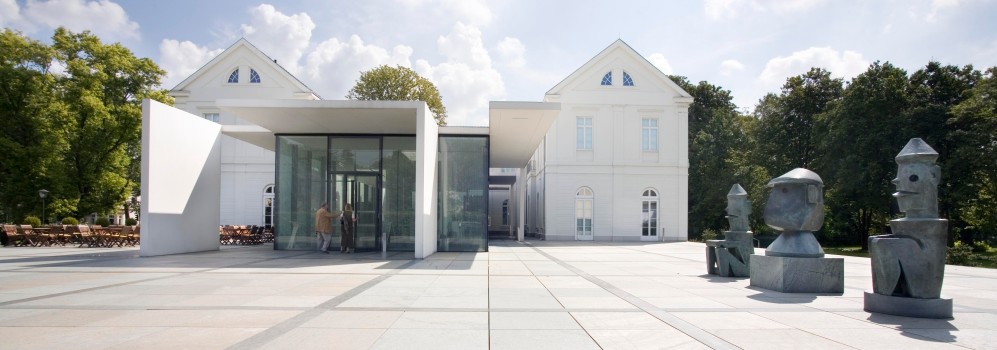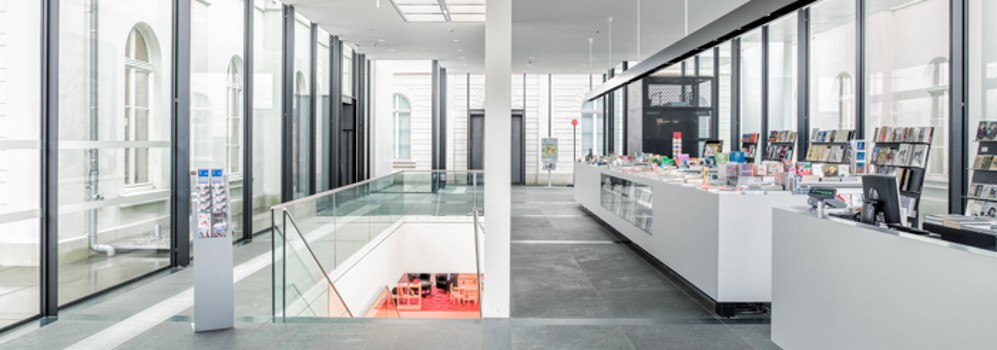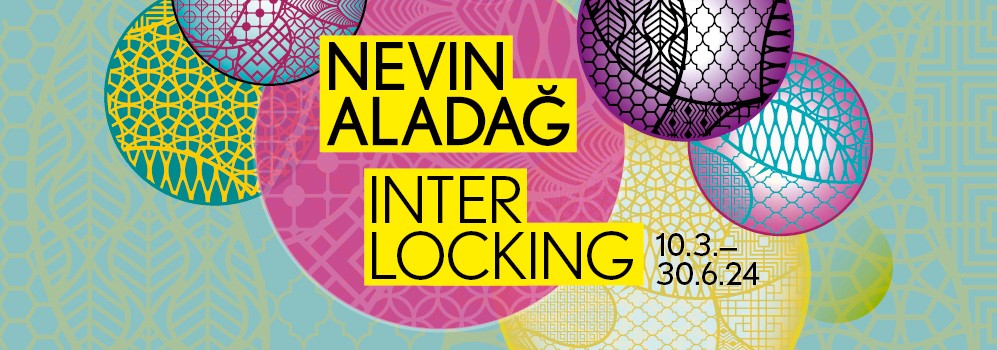
Nando Nkrumah, No Frontiers, 2016, 3D graphic collage, © VG Bild-Kunst, Bonn 2024
NANDO NKRUMAH – HEUTE SCHON MORGEN (Today is already tomorrow)
Exhibition from June 21 until November 3, 2024
New Perspectives in the Leonora Carrington Hall
The exhibition Heute schon Morgen (Today is already tomorrow) in the Max Ernst Museum Brühl of the LVR presents works of the German-Ghanaian artist Nando Nkrumah. With the New Perspectives format, the museum invites contemporary artists to allow new perspectives on Surrealism in the context of the collection.
Nando Nkrumah (*1979 in Kumasi, Ghana, lives and works in Cologne) is known for his interventions in the German museum landscape, in which he reveals and criticises colonial structures. He considers empowerment and the power of imagination to be the central pillars of his artistic work. His multimedia works are located in the field of tension between techniques like oil painting and charcoal drawing as well as digital methods like 3D scanning and 3D modelling. They merge traditional and modern life worlds, cultures and their symbols to form futuristic and utopian conceptual spaces.
In his pictorial worlds, the artist explores the power of imagination to shape the future. He combines personal memories, dreams and hopes as well as visions of the future of Afrofuturism with surrealistic elements.
Subject to change!
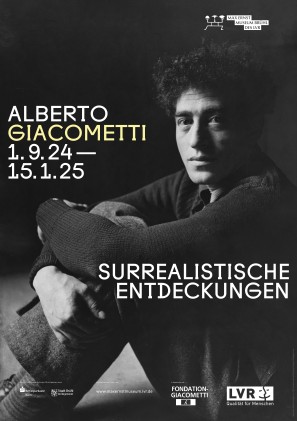
Key Visual of "Alberto Giacometti – Unveiled Surrealism"
ALBERTO GIACOMETTI – UNVEILED SURREALISM
Exhibition from September 1, 2024 until January 15, 2025
The Max Ernst Museum Brühl of the LVR is dedicating a major exhibition to Swiss sculptor, painter and draughtsman Alberto Giacometti (1901–1966) in collaboration with the Fondation Giacometti in Paris. It presents Giacometti's surrealist oeuvre and, for the first time, highlights the artist’s friendship and creative ties with Max Ernst.
The work of Alberto Giacometti is among the most original artistic creations of the modern period. Known for his elongated and expressive sculptures created after the Second World War, Giacometti also produced a significant body of highly inventive and psychologically charged works in the 1930s, at a time when he was actively involved in the Parisian Surrealist circles. Like Max Ernst, the sculptor moved to Paris in 1922, where they met in 1929 and worked in neighbouring studios.
On the occasion of Surrealism's centennial, the exhibition presents Giacometti's work from the 1920s and 1930s, which is characterized by the Surrealist circles in Paris and the artist's great interest in exploring the unconscious, chance, the ambivalence of signs, as well as ancient and non-Western arts. Alongside these works, other Surrealist-influenced sculptures will be shown, which he developed after 1945, together with paintings, drawings, prints and photographs.
The exhibition with over 70 works presents major works by the artist, such as The Couple (1926), Spoon Woman (1927), Suspended Ball (1930), Disagreeable Object (1931), The Nose (1949) and The Cage (first version) (1949–50), and is punctuated by works by Max Ernst
Subject to change!
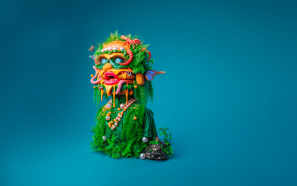
Anne Horel, Burger Fern, 2024, Digital Collage
HYPERCREATURES
Exhibition from March until October 2025
Since the beginning of the 20th century at the latest, hybridisations of materials and motifs have been one of the defining processes in the visual arts. For his surrealist collages created from 1922 onwards, Max Ernst used scissors and a scalpel to dismantle images of human and non-human bodies and assemble them into new creatures.
The international group exhibition Hypercreatures at the Max Ernst Museum Brühl of the LVR sheds light on the significance of the fundamental image-making processes of surrealism for contemporary art. With a view to social changes or current developments in science and technology, around 20 contemporary artists are showing hybrid creatures that combine elements of humans, animals, machines and plants. These hyper-creatures stand for a new understanding of identity, difference and culture.
Subject to change!


